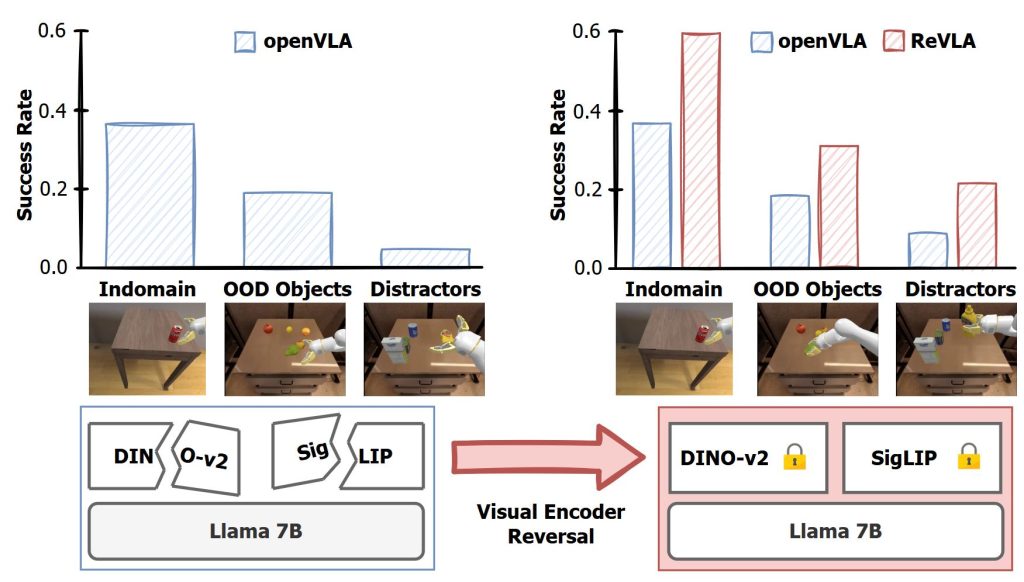
Sombit Dey, Jan-Nico Zaech, Nikolay Nikolov, Luc Van Gool, Danda Pani Paudel
International Conference on Robotics and Automation, ICRA 2025
Abstract
Recent progress in large language models and access to large-scale robotic datasets has sparked a paradigm shift in robotics models transforming them into generalists able to adapt to various tasks, scenes, and robot modalities. A large step for the community are open Vision Language Action models which showcase strong performance in a wide variety of tasks. In this work, we study the visual generalization capabilities of three existing robotic foundation models, and propose a corresponding evaluation framework.
Our study shows that the existing models do not exhibit robustness to visual out-of-domain scenarios. This is potentially caused by limited variations in the training data and/or catastrophic forgetting, leading to domain limitations in the vision foundation models. We further explore OpenVLA, which uses two pre-trained vision foundation models and is, therefore, expected to generalize to out-of-domain experiments. However, we showcase catastrophic forgetting by DINO-v2 in OpenVLA through its failure to fulfill the task of depth regression. To overcome the aforementioned issue of visual catastrophic forgetting, we propose a gradual backbone reversal approach founded on model merging. This enables OpenVLA which requires the adaptation of the visual backbones during initial training — to regain its visual generalization ability. Regaining this capability enables our ReVLA model to improve over OpenVLA by a factor of 77% and 66% for grasping and lifting in visual OOD tasks .